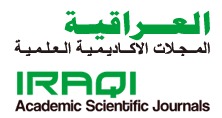The impact of a proposed training Approach in terms of low-intensity and circular-style interval training for some physical and skill variables among volleyball young players
أثر منهاج تدريبي مقترح بطريقة التدريب الفتري المنخفض الشدة وبالأسلوب الدائري لبعض المتغيرات البدنية والمهارية للاعبات الكرة الطائرة الشابات
DOI:
https://doi.org/10.33170/10.33170/volالملخص
The research aims to:
1 - Detect the significance of statistical differences between the pre and posttests of the experimental group in a number of physical and skill variables.
2 – Detect the significance of statistical differences between the pre and posttests of the control group in a number of physical and skill variables.
3 - Detect the significance of statistical differences between the experimental and control groups of post-test for a number of physical and skill variables.
The experimental approach was used due to its suitability for the research problem and nature .The research sample was chosen by the deliberate method consisting of (18 players), divided into two groups, one experimental and the other control and the reality of (9 players) in each group, Parity between the two groups was achieved in variables (age, height, weight, number of physical and skill variables).
The main research steps were the codification of a number of exercises and interview with some specialists to determine the best exercises suitable for the research sample, and then the development of the approach and presented to some specialists to make the necessary adjustments to it. Three exploratory experiments were conducted, the first experiment was to see the possibility of implementation Physical and technical tests and avoid difficulties. The second experiment aimed to identify the possibility of conducting the selected exercises and to ensure the times of rest between repetitions and totals, while the third experiment aimed to identify the possibility of implementing a complete training unit. The pre physical skills were carried out in one day. The training approach was then carried out for two intermediate courses with a 3: 1 movement, with eight small courses. Each small course included three training units. Accordingly, 24 training units were implemented .SPSS was used for the following treatments: (arithmetic mean, standard deviation, T test for associated and independent samples), and percentage.









